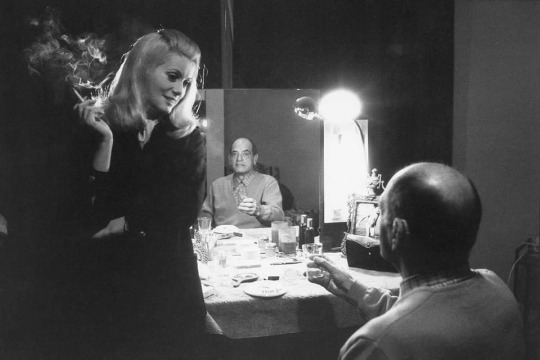#luis bunuel
Text
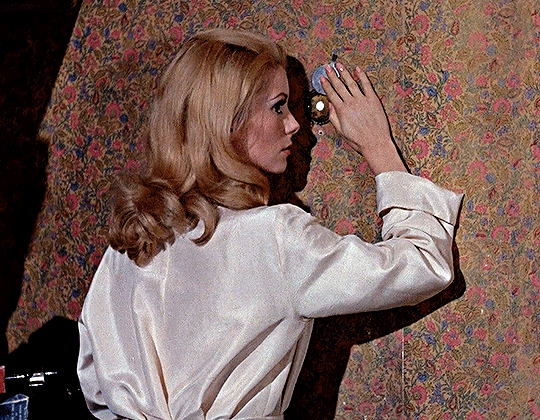




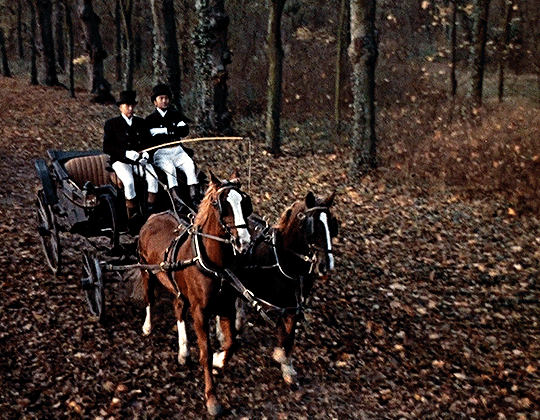
BELLE DE JOUR (1967) dir. Luis Buñuel
#belle de jour#filmedit#filmgifs#moviegifs#dailyflicks#dailyworldcinema#userfilm#userstream#filmdaily#cinemapix#cinemapast#uservintage#luis bunuel#drama#60s#film#myedit
568 notes
·
View notes
Text

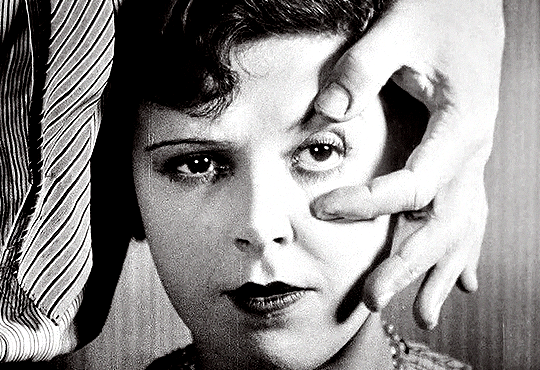





AN ANDALUSIAN DOG | UN CHIEN ANDALOU (1929) dir. Luis Buñuel
#an andalusian dog#un chien andalou#luis bunuel#classicfilmedit#filmedit#classicfilmsource#classicfilmblr#classicfilmcentral#dailyworldcinema#cinematv#cinemaspast#uservintage#userstream#filmdaily#filmgifs#moviegifs#drama#*mine#horror#1920s#films#y: 1929
555 notes
·
View notes
Text


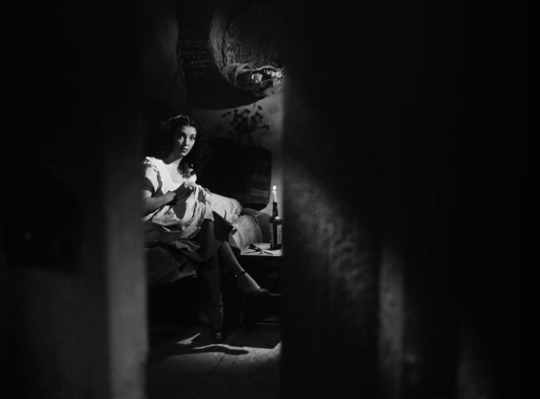


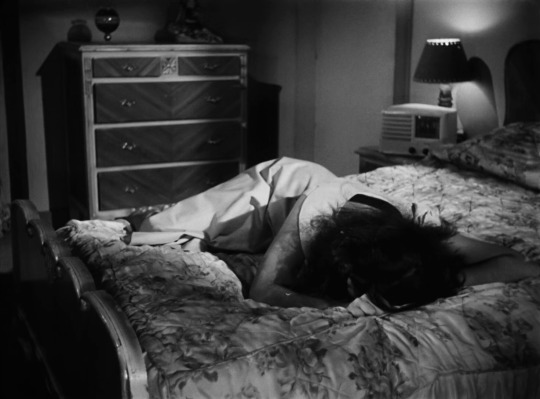
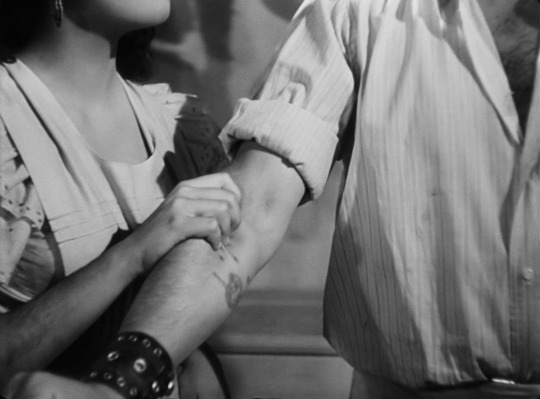


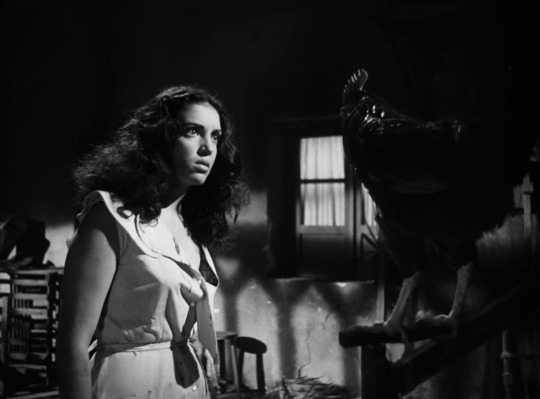
El bruto (Luis Buñuel, 1953)
#films watched in 2023#El bruto#The brute#Katy Jurado#Buñuel#Bunuel#Luis Buñuel#Luis Bunuel#1953#siete#black and white#Pedro Armendáriz#Andrés Soler#Pedro Armendariz#drama#poverty#Mexico#La brute
362 notes
·
View notes
Text

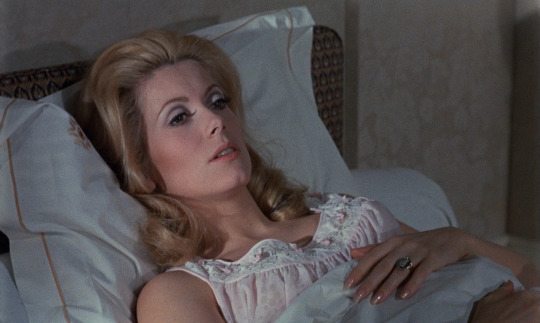
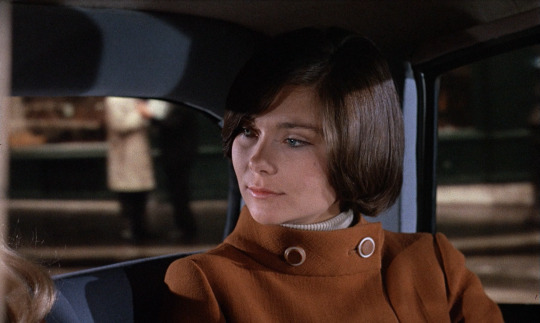
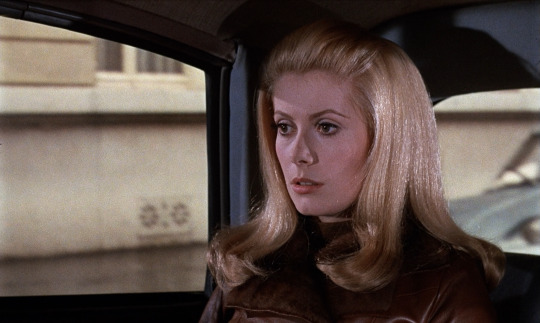



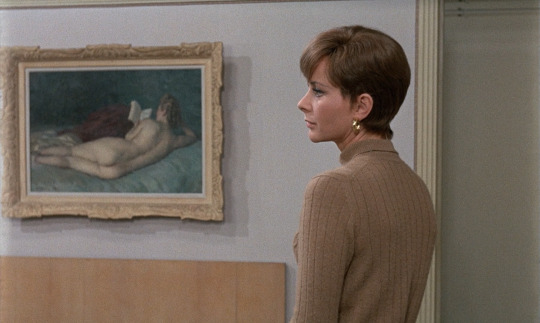
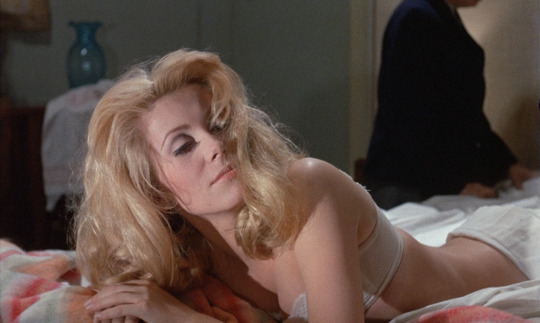

Belle de jour (Luis Buñuel, 1967)
#catherine deneuve#luis bunuel#macha méril#belle de jour#criterion collection#favorite movies#french cinema
276 notes
·
View notes
Text
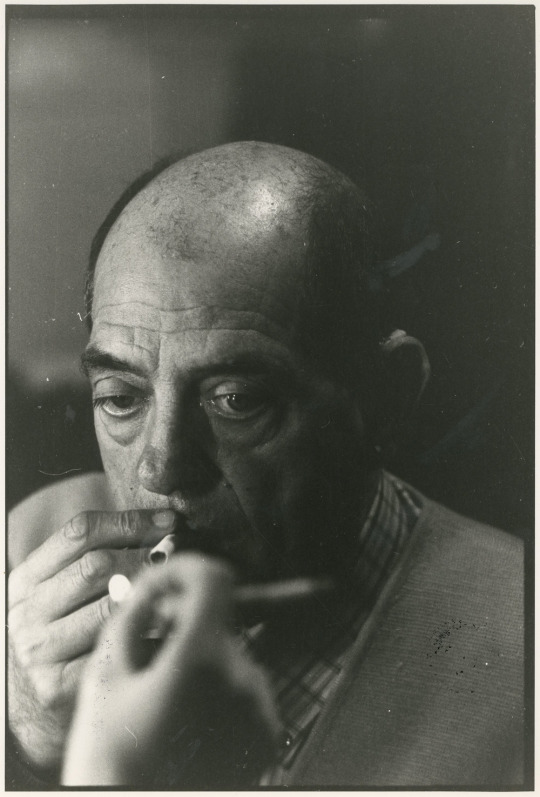
Luis Buñuel, February 22, 1900 – July 29, 1983.
94 notes
·
View notes
Text
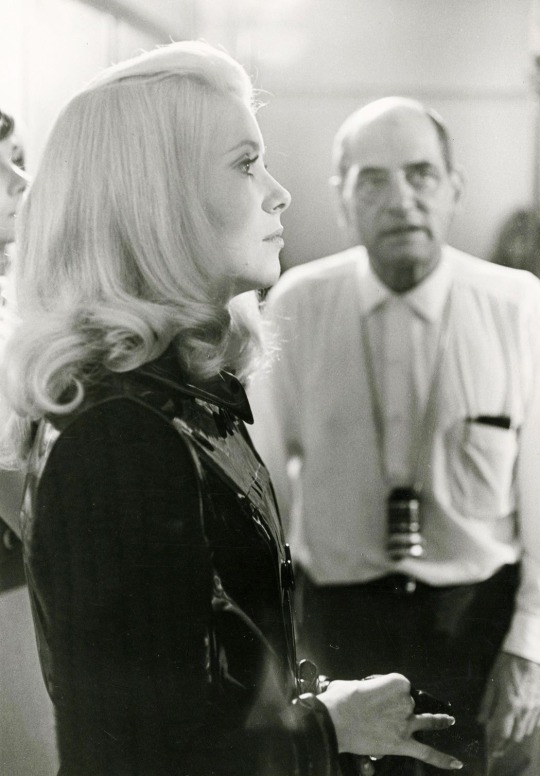

Catherine Deneuve and Luis Buñuel during production of BELLE DE JOUR (1967)
72 notes
·
View notes
Text
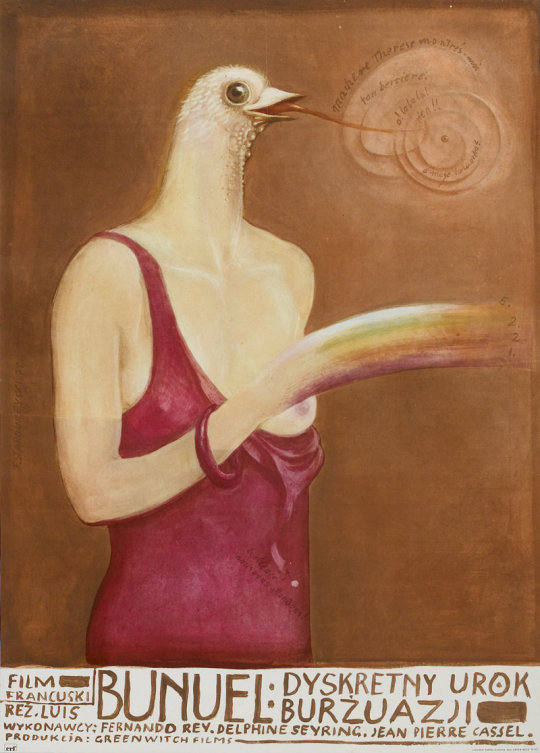
Franciszek Starowieyski, poster for The Discreet Charm of the Bourgeoisie (Luis Buñuel, France, 1972). 1975
#Franciszek Starowieyski#luis bunuel#posters#movie posters#terrible movie I always felt#though I love bunuel
140 notes
·
View notes
Text

Javier Mayoral, Notable Ears (Part 1), 2023
Acrylic on panel, 8 x 9.5 in
#javier mayoral#helmut newton#vincen#dora maar#john cassavetes#julio cortázar#luis bunuel#hedy lamarr#albert camus#anais nin#miles davis#jean paul sartre#elsa schiaparelli#ears
82 notes
·
View notes
Text





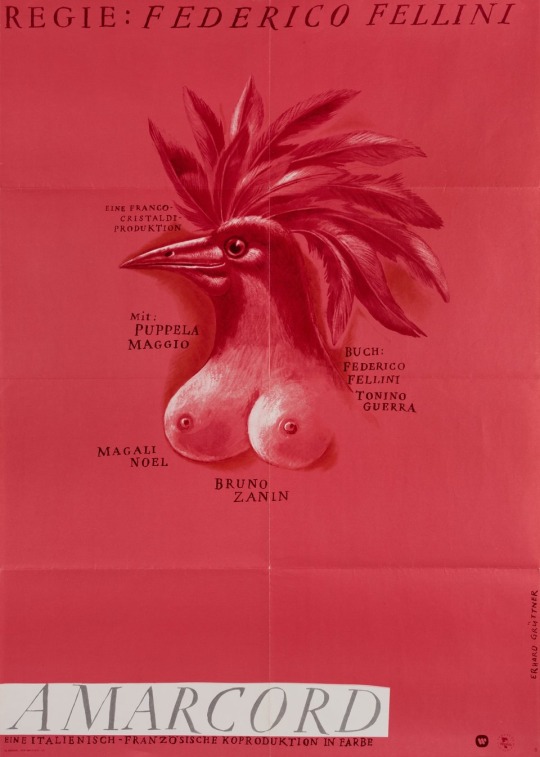

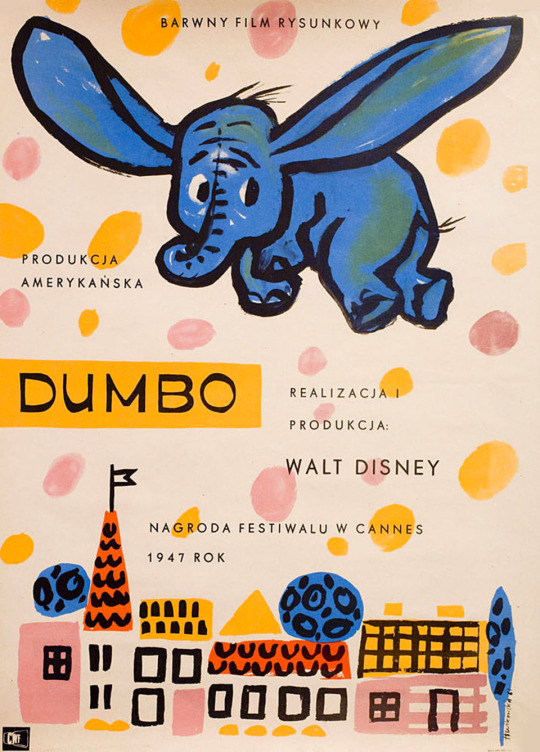
Various poster designs for films: DUMBO (1941, dir. Ben Sharpsteen), FOR A FEW DOLLARS MORE (1965, dir. Sergio Leone), MASCULIN FÉMININ (1966, dir. Jean-Luc Godard), 2001: A SPACE ODYSSEY (1968, dir. Stanley Kubrick), LAST TANGO IN PARIS (1972, dir. Bernardo Bertolucci), AMARCORD (1973, dir. Federico Fellini) and THE DISCREET CHARM OF THE BOURGEOISIE (1972, dir. Luis Buñuel).
#dumbo#ben sharpsteen#for a few dollars more#sergio leone#clint eastwood#masculin feminin#jean luc godard#jean pierre leaud#chantal goya#2001: a space odyssey#stanley kubrick#last tango in paris#bernardo bertolucci#marlon brando#maria schneider#amarcord#federico fellini#the discreet charm of the bourgeoisie#luis bunuel#film#film poster#poster design
78 notes
·
View notes
Photo



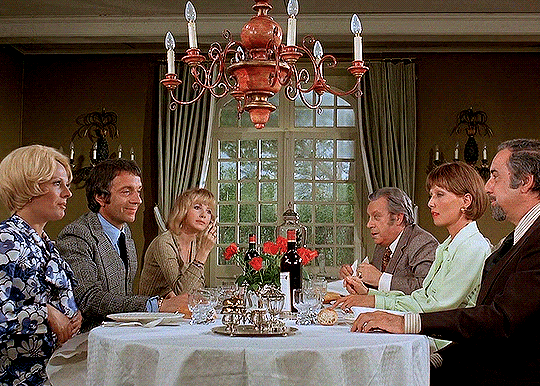


THE DISCREET CHARM OF THE BOURGEOISIE (1972)
dir. Luis Buñuel
183 notes
·
View notes
Text
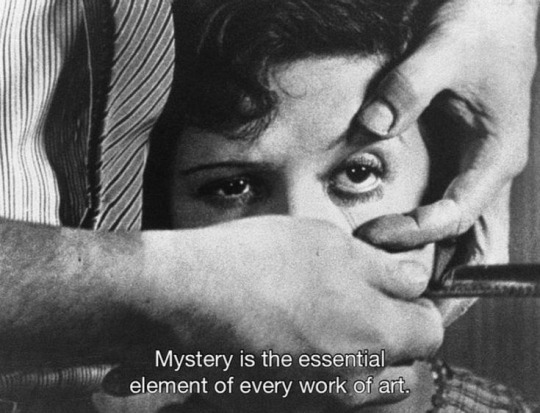
Un Chien Andalou, 1929.
82 notes
·
View notes
Text
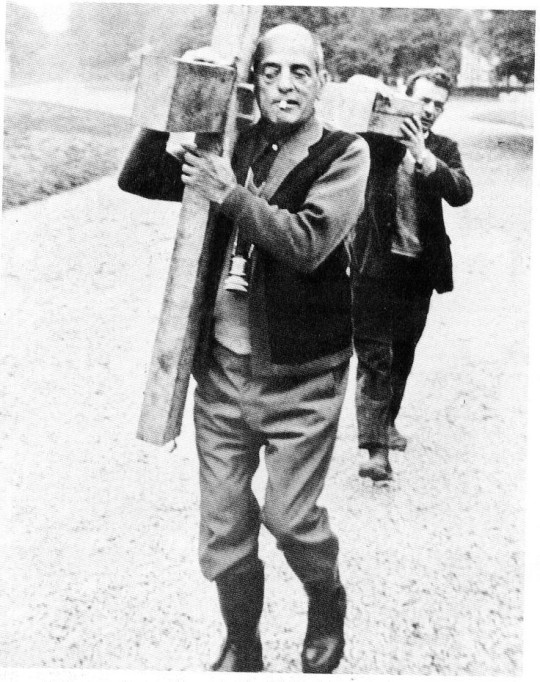
Luis Bunuel
La voie lactée 1969
29 notes
·
View notes
Text

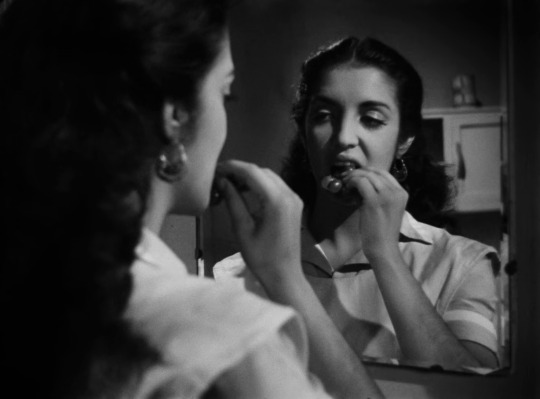

Katy Jurado in El bruto (Luis Buñuel, 1953)
#El bruto#The brute#Katy Jurado#Buñuel#Bunuel#Luis Buñuel#Luis Bunuel#1953#black and white#faces#teeth#mirror#fruit#grape#fruits#La brute
135 notes
·
View notes
Text
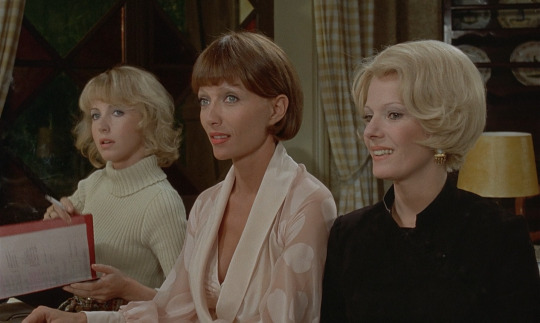
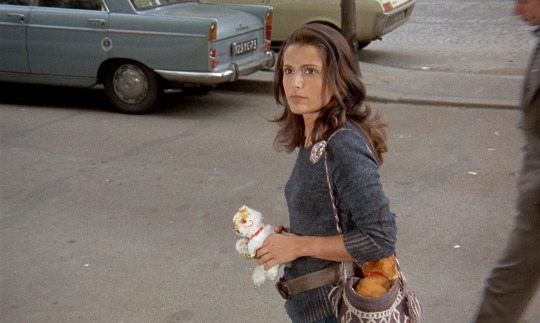
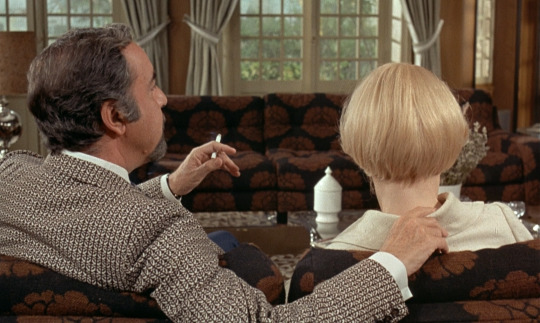





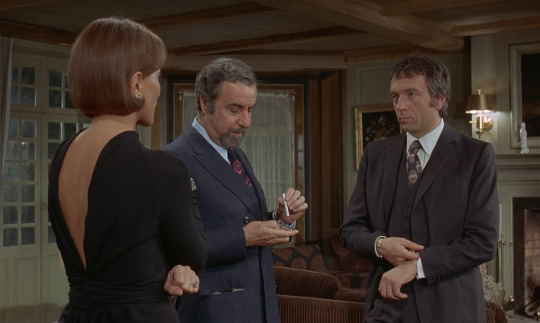

The Discreet Charm of the Bourgeoisie (Luis Buñuel, 1972)
#delphine seyrig#bulle ogier#fernando rey#jean-pierre cassel#Stéphane Audran#luis bunuel#french cinema#Le charme discret de la bourgeoisie#criterion collection#the discreet charm of the bourgeoisie#surreal cinema#surrealism
81 notes
·
View notes
Photo

C'est fou comme les gens ont de moi cette image de femme sophistiquée, glaciale. C'est une telle erreur, c'est tellement mal me connaître.
- Catherine Deneuve on herself in Belle de Jour (1967)
In anticipation of a new film this summer by Catherine Deneuve called ‘Bernadette’ where she plays Bernadette Chirac, the wife of French Jacques Chirac, I’ve been re-watching some her back catalogue of films. She’s done over 64 films and at almost 80 years old she’s still going strong. And yet out of her many films I’ve always been drawn back to one film which has become a cult classic. Watching it and re-watching it and even gorging on books on its making, new intriguing details reveal themselves about this landmark French art house classic - Belle de Jour (1967).
I once had the privilege of having dinner with her - or rather sat around the same table - through a Parisian host and his lovely wife who had gathered an eclectic group of friends across generations together. I was too self-conscious to talk about her film career directly. I was on surer ground when we indulged in small talk where she was perfectly down to earth and very pleasant. I felt it would be rude to go all fan girl on her and pepper her with questions about Belle de Jour in particular as she’s known to be very ambivalent about her experience of the film - a film that really defined her in the eyes of many people.
But it didn’t mean she didn’t recognise its cultural importance though as she was quite happy to amuse us with a funny story about Belle de Jour. A newly restored 35mm version was funded by the fashion house Saint Laurent back in 2018. Deneuve always had a close relationship with Yves Saint Laurent and also the fashion house. She was the one to introduce Buñuel to Saint Laurent. So the fashion house had a glitzy premiere in New York. But they didn’t count on many of their guests being late. Most of the guests were stuck in the New York traffic and the rain. However Martin Scorsese was the only one to get out of cab and run like a mad man through the pelting rain and huge traffic. A true cinephile, he was so desperate to see the film restored to its former glory that he would go to any lengths to see it.

In Belle de Jour, Catherine Deneuve, whose limpid beauty is capable of sustaining any interpretation, is a perfect Severine and demonstrates a remarkable control in progressing, with enormous economy of gesture and movement, from frigidity to physical warmth as the bored housewife who indulges in part time sex work.
“I felt they showed more of me than they’d said they were going to,” Catherine Deneuve remarked to Pascal Bonitzer in 2004, about the making of Luis Buñuel’s 1967 Belle de jour. “There were moments when I felt totally used. I was very unhappy.”
The story of Séverine, a deeply disenchanted haute bourgeois Paris housewife who finds erotic liberation through byzantine psycho-sexual fantasies and part-time work at an upscale brothel, Belle de jour certainly made extreme demands of Deneuve: her character is flogged, raped, and pelted with muck, among other assaults. But despite her objections to the way she was treated and her difficulties with Buñuel, Deneuve’s performance in Belle de jour turned out to be one of her most iconic.

Deneuve, who had become a star only three years earlier, as the melancholy jeune fille in Jacques Demy’s 1964 all-sung musical The Umbrellas of Cherbourg, was just twenty-three when Belle de jour came out; notably, Buñuel’s film was released in France less than three months after Demy’s radiant, MGM-inspired musical The Young Girls of Rochefort, starring Deneuve and her real-life sister Françoise Dorléac.
But Belle de jour, more than any other film from the first decade of her career, defined what would become one of the actress’s most notorious personae: the exquisite blank slate lost in her own masochistic fantasies and onto whom all sorts of perversions could be projected. (Deneuve as deviant tabula rasa was first seen in Roman Polanski’s 1965 Repulsion, in which she plays a damaged beauty plummeting into psychosis; but Belle de jour doesn’t portray its heroine as mad, instead remaining deliberately ambiguous about the origins of her unconventional desires - and presaging the bizarre libertines she would later play in such films as Marco Ferreri’s Liza, 1972, and Tony Scott’s The Hunger, 1983.)

Buñuel was at a very different stage of his career from his young star, but Belle de jour represented a peak for him as well, the greatest - and most successful - film of his extremely rich late period. These works, bookended by 1964’s Diary of a Chambermaid and 1977’s That Obscure Object of Desire (his final film), were made mostly in France - where Buñuel had begun his filmmaking career with the incendiary, surrealist Un chien andalou (1929) - following the exiled Spanish director’s two decades in Mexico.
Many of these late projects were cowritten with Jean-Claude Carrière and focus intensely on sexual perversion (a theme that recurs throughout Buñuel’s work). Belle de jour certainly falls into that category, and also, typically, skewers the entitled classes. Yet it stands out as the director’s most intricate character study—but of a protagonist who resists definition; the heroine, frequently trussed up and mussed up, retains an odd, opaque dignity in her debauchery.

In that same interview with Bonitzer, Deneuve was judicious enough to distinguish her experience of making Belle de jour from the final product, calling it a “wonderful film.” But her first meetings with Buñuel hinted at the duress that was to follow. According to John Baxter’s 1994 biography, Buñuel, it took time for the director to “warm to” his star: “He felt, with some justice, that she had been foisted on him, first by the Hakims [Belle de jour’s producers], then by her lover of the time, François Truffaut.” After dining with Buñuel at his house, the book recounts, Deneuve “left with little more than an impression that he disliked actors in general and was reserving his decision about her. The only advice he offered was the advice he had always given actors: ‘Don’t do anything. And above all, don’t . . . perform.’”
Though Deneuve deferred to her director, she was no puppet; Belle de jour is as much hers as Buñuel’s. The filmmaker, famously resistant to “psychological” interpretations of his work, stuffs Belle de jour with his trademarks, confounding any attempt to parse meaning: the surrealist blurring of fantasy and reality, fetishism, sexual perversion, blasphemy.
But as Séverine, Deneuve, despite operating in the nebulous realm between dream and waking, imbues the film with irresistible and very real lust - and luster. Sporting the chicest Yves Saint Laurent finery, Deneuve revels in the peculiar desires of her character while always inviting our own. As Buñuel himself acknowledges in his 1984 autobiography, My Last Sigh (published a year after his death), Belle de jour “was my biggest commercial success, which I attribute more to the marvelous whores than to my direction.” (Per Baxter, after the filming of Belle de jour, he would finally admit of his star, “She’s really a very good actress.”) Deneuve’s gift was to update the world’s oldest profession for her still-expanding résumé.

The director had some modifying to do as well. Buñuel, who adapted Joseph Kessel’s 1928 novel with Carrière, assessed the source material dryly in My Last Sigh: “The novel is very melodramatic, but well constructed, and it offered me the chance to translate Séverine’s fantasies into pictorial images as well as to draw a serious portrait of a young female bourgeois masochist. I was also able to indulge myself in the faithful description of some interesting sexual perversions.”
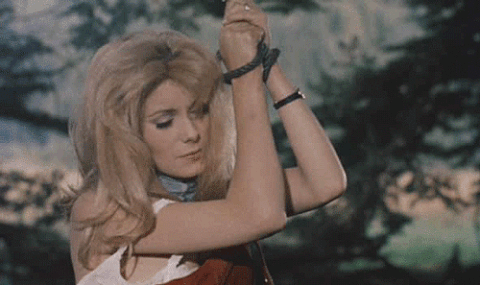
He wastes no time in establishing those bizarre erotic proclivities. In Belle de jour’s opening scene, Séverine and her doting husband of one year, Pierre Serizy (Jean Sorel), a handsome, dutiful surgeon, are snuggled close in a horse-drawn carriage; he interrupts the tender moment with the lament “If only you weren’t so cold.” She pulls away, defensive. The sound of horse bells, which has been increasing in volume from the film’s first shot - and will indicate Séverine’s dreams or fantasies throughout - stops. Pierre orders his wife out of the cab; when she refuses, he and the two drivers remove her by force. She is gagged, bound to a tree, and whipped by the coachmen, who are then instructed by Pierre to rape her. When one begins to ravish her, Séverine appears to be in ecstasy.
This carnal reverie is soon interrupted by the Serizys at home, preparing for their usual chaste bedtime ritual. Pierre, in white pajamas, asks his pale-pink-nightie-clad wife, under the covers in a separate bed, what she’s thinking about: “I was thinking about you . . . and us. We were out for a ride in a carriage”—a scenario Pierre has heard before.

The fantasy clearly belongs to Séverine alone; she finds erotic thrills in her secret thoughts of debasement and humiliation, her florid imagination compensating for her sterile, sexless existence. Her most private desires will soon be realized at 11, cité Jean de Saumur, the address of the boutique bordello run by Madame Anaïs (Geneviève Page), given to Séverine by Pierre’s louche friend Husson (Michel Piccoli).
At Madame Anaïs’s, Séverine - now going by the nom de pute Belle de jour, a reference to her two-to-five shift (she insists on being home when Pierre returns from his workday at the hospital) - is horrified at first but proves to be a quick study. A burly Asian client scares off her two seasoned colleagues with his mysterious, buzzing lacquered box, but she is absolutely transfixed; after the john leaves, she, lying prone on the bed, lifts her head, her luxuriant mane of blonde hair disheveled, to reveal a woman still drunk on orgasmic pleasure.

The contents of the box are one of the film’s many mysteries (when asked what is inside, Buñuel would reply, “Whatever you want there to be”). Yet the greatest enigma is Séverine herself: why does she recoil from the slightest sexual advance from her husband yet lose herself, both in fantasy and in her new line of work, in elaborate masochistic tableaux? “Pierre, it’s your fault too. I can explain everything,” Séverine insists to her husband in the opening fantasy sequence, as she’s being forcibly removed from the landau. But of course, she can’t - and won’t.
As in Repulsion, there are flashbacks to possible childhood trauma in Belle de jour. In one, a man appears to touch a young Séverine inappropriately; in another, she stubbornly refuses the Blessed Sacrament. But unlike in Repulsion, whose final, prolonged shot of a menacing family photo is offered as the root of Carole’s pathology, these scenes in Buñuel’s film are almost non sequiturs, presented not as psychological explanation but as blips in a baroque sexual surrealism.

As Séverine’s reveries and job demands become stranger and more mysterious - in one daydream, she is pelted with thick black mud by Pierre and Husson, who call her “tramp” and “slut”; a ducal client solicits her in the bois de Boulogne to perform in a necrophilic rite - Deneuve retains her porcelain, celestial inscrutability, while simultaneously transforming into an earthbound debauchee, delighting in her own defilement. Madame Anaïs (whose early, shameless flirtation with Séverine - who eventually reciprocates - is the first of the many moments in Deneuve’s filmography that would cement her status as a lesbian icon) touts her new employee’s regal bearing to prospective customers: “[She’s] a little shy, perhaps, but a real aristocrat.”
Séverine’s coworkers, Charlotte (Françoise Fabian) and Mathilde (Maria Latour), are constantly remarking on the impeccable cut and style of her ensembles. Yet what this seemingly untouchable goddess craves most is the brutality of her latest john, the thug Marcel (Pierre Clémenti), a rough with metal teeth, a walking stick that doubles as a shiv, and fetishwear (shiny boots of leather with matching overcoat) that could have been dreamed up in an atelier overseen by Kenneth Anger and Pierre Cardin.
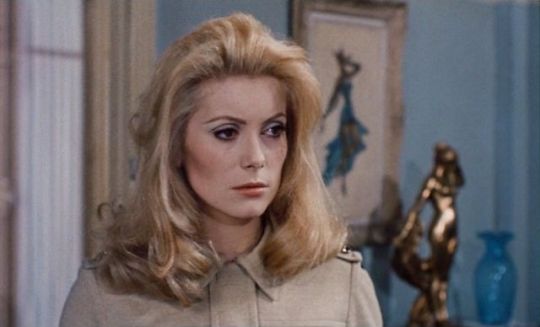
Séverine’s relationship with Marcel will lead to Pierre’s ruin - or does it? The ambiguous ending of Belle de jour suggests that everything that preceded it may have existed only in the heroine’s cracked dreamscape. Like the buzzing box, the film’s final scene is whatever you want it to be.
Yet one thing is certain: Deneuve transcends kink. And despite her misery during the Belle de jour shoot, she would return for even more bizarre treatment three years later in Buñuel’s Tristana, losing both her virtue and a leg.
Almost 55 years after it was made Belle de Jour continues to be a compelling film. It takes on greater curiosity for me as I live in Paris and there are Séverines aplenty that I come across. But the film also speaks to a non-French audience even today as it remains a shrewd commentary on the hypocrisy of social relations and sexual politics. Buñuel invites us to ponder the transgression of a socially respectable woman secretly being a prostitute in the afternoons, but I don’t think he bothered to pose the question why a socially respectable gentleman should be secretly visiting a prostitute in the afternoons - which happens more than one might think and that behaviour is normalised. Something to think about.
#deneuve#catherine deneuve#quote#french#film#movie#cinema#belle de jour#actress#luis bunuel#bunuel#film making#arts#culture#france#scorsese#personal#paris
145 notes
·
View notes
